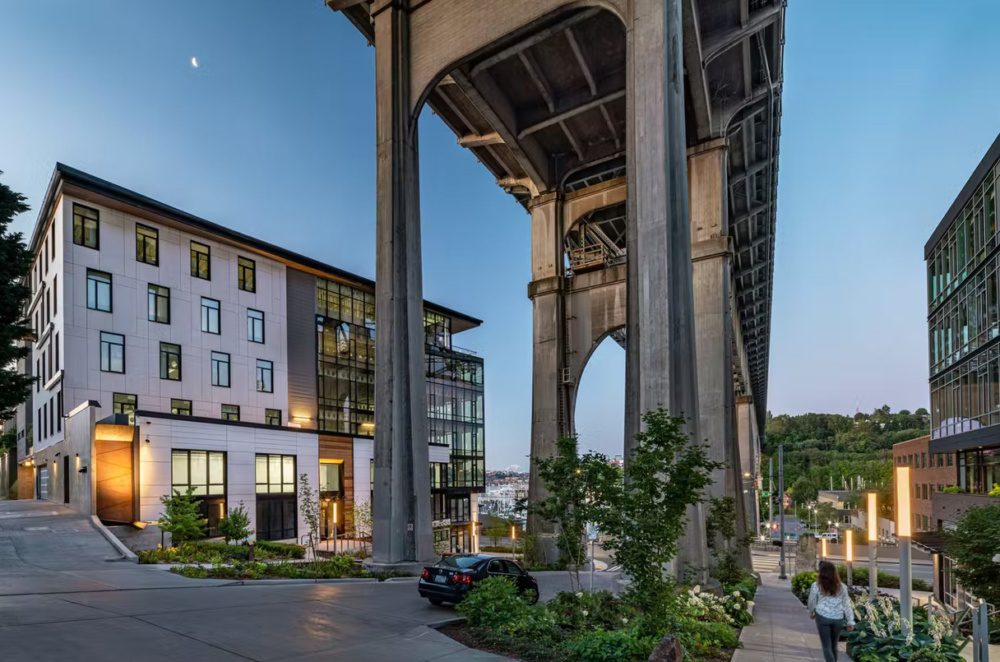The content for this article was originally feature in Smart Buildings Technology on April 29, 2022.

Located in Seattle’s Fremont neighborhood, the Watershed building is sited next to the Aurora Bridge. The building was designed by local architecture, landscape architecture, and interior design firm Weber Thompson.
Known for its quirky shops and lively restaurant and arts scene, Seattle’s Fremont neighborhood is a natural fit for the Watershed building. Sleek as it is intelligent, the seven-story, mixed-use building with a glass curtain wall and planted terraces goes beyond being one of the area’s most healthy and high-performing buildings: It extends a hand to its neighbor, the state-owned George Washington Memorial Bridge, also known as Aurora Bridge.
Why not improve the entire ecosystem?
Constructed between 2018 and 2020, Watershed consists of approximately 72,000 square feet of street-level retail space and Class A+ office space. Its commercial office tenants include its own designer, Weber Thompson, a full-service architecture, landscape architecture, and interiors firm.
Watershed is one of a handful of projects enrolled in Seattle’s Living Building Pilot Program. In exchange for meeting the requirements for Petal certification from the International Living Future Institute’s Living Building Challenge (LBC), the pilot projects are eligible for several construction benefits, including up to 25% more floor area, 15 feet of additional height, and departure from other Seattle Municipal Code requirements, such as size of use, parking access, open space, and structural building overheads.
Watershed is pursuing LBC’s Materials Petal, which requires projects to use only responsible, nontoxic, transparent, and socially-equitable building materials that do not appear on LBC’s Red List. Watershed’s other design and performance accolades include a three-star Fitwel certification—the highest level—for occupant health; and Salmon-Safe certification for meeting land and water management practices that protect Pacific salmon.
Weber Thompson principal and sustainability director Myer Harrell says LBC’s Materials Petal and Fitwel certifications helped set the framework for a healthy building and provided value from a leasing point of view. But achieving them wasn’t easy. The Materials Petal requires architects to ensure each building product offers transparency “through material disclosure and environmental and health product declarations,” Harrell says. “It gets rather complicated when you need every supplier and their suppliers to disclose material percentages for every product. And each tenant has to meet the requirements. We help by providing them with lists of compliant elements that they can leverage for everything from carpets to workstations.”